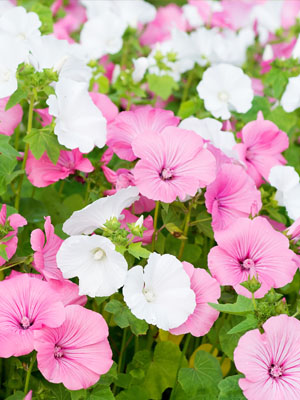Crop Rotation Group
Miscellaneous
|

|
Soil
Well-drained soil of average fertility.
|
Position
Full sun.
|
Frost tolerant
There are perennial lavateras that survive winter, but the annual form is killed by hard freezes.
|
Feeding
Mix a light application of a balanced organic fertilizer into the soil prior to planting. In midsummer, drench plants with a liquid fertilizer to prolong bloom time.
|
Companions
Locate lavatera near the edges of beds to make it easy to gather stems for indoor arrangements.
|
Spacing
Single Plants: 11" (30cm) each way (minimum)
Rows: 11" (30cm) with 11" (30cm) row gap (minimum)
|
Sow and Plant
Sow large lavatera seeds where you want them to grow at about the time of your last spring frost. Or, start seeds indoors to get a head start on the season, and set them out after the last spring frost has passed.
Our Garden Planning Tool can produce a personalized calendar of when to sow, plant and harvest for your area.
|
Notes
Lavatera is an annual hibiscus that attracts hummingbirds, and the newly opened blossoms make good cut flowers. Colors include soft pink and white.
|
Harvesting
Gather blossoms to use as cut flowers just as they open. Snip off old flowers once a week to promote blooming time. If you allow some seedpods to ripen until they shatter, lavatera will reseed in hospitable spots.
|
Troubleshooting
Expect some cosmetic damage from leaf-eating beetles. Where Japanese beetles are a common pest, cover plants with row cover until they come into bloom.
|